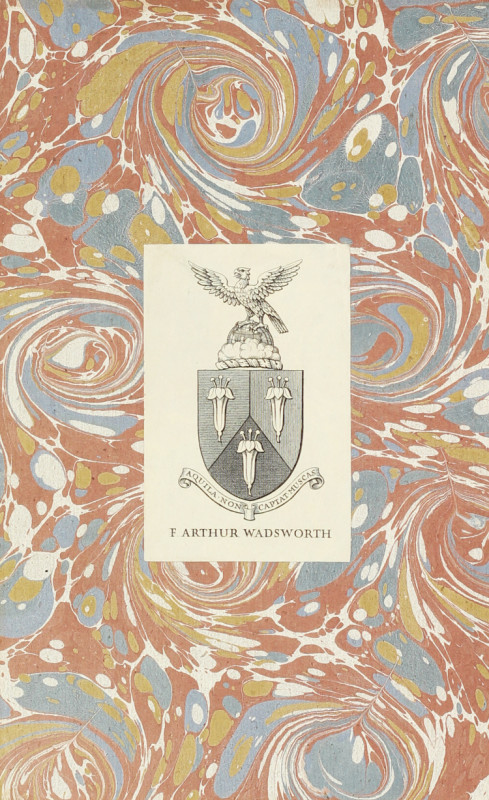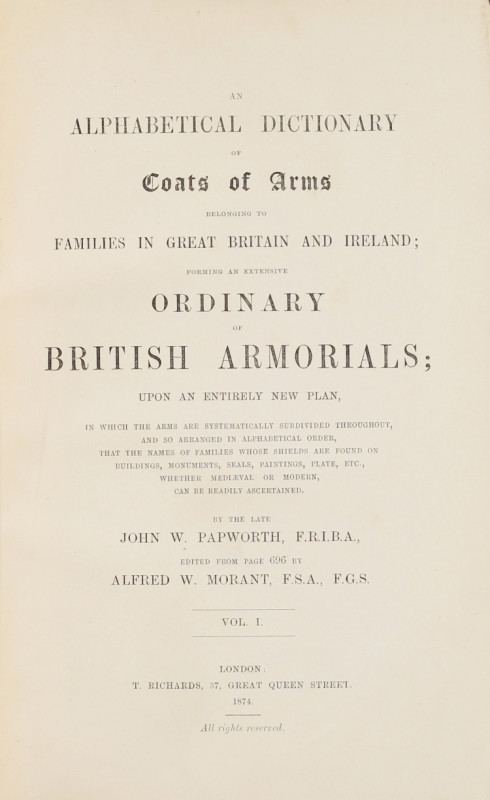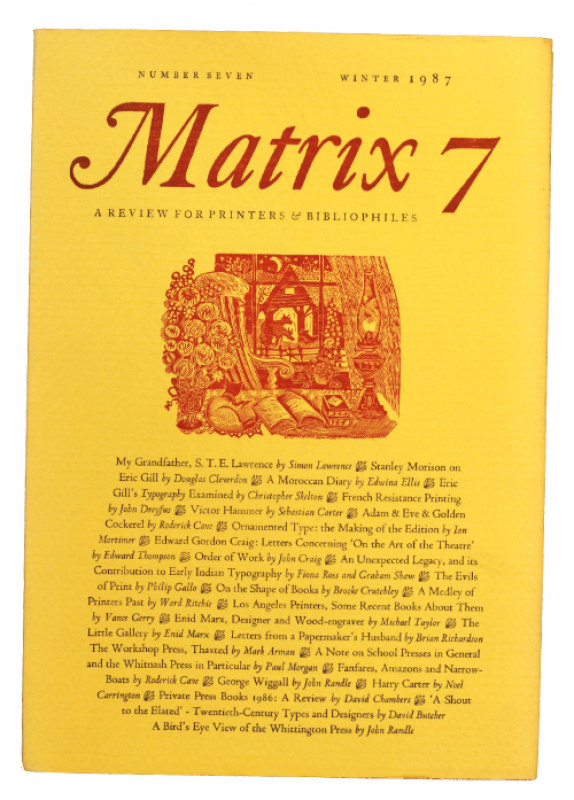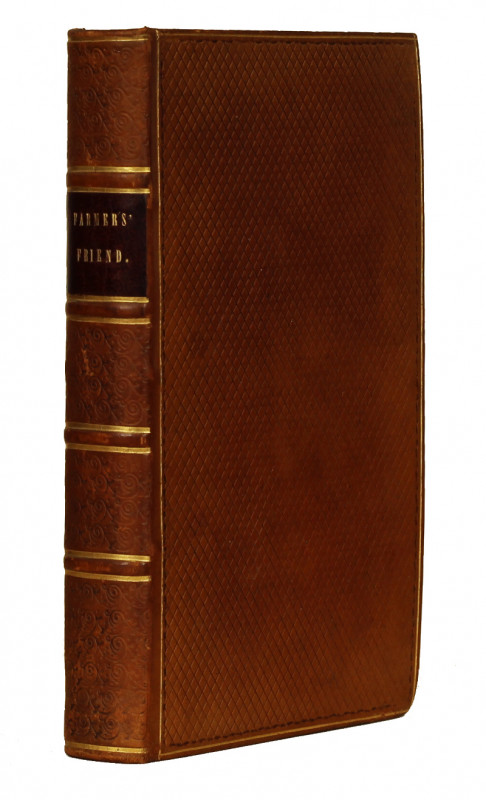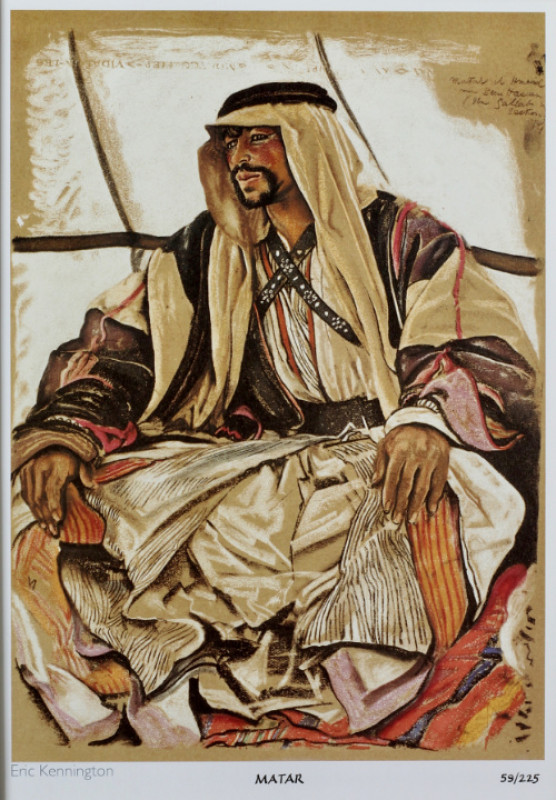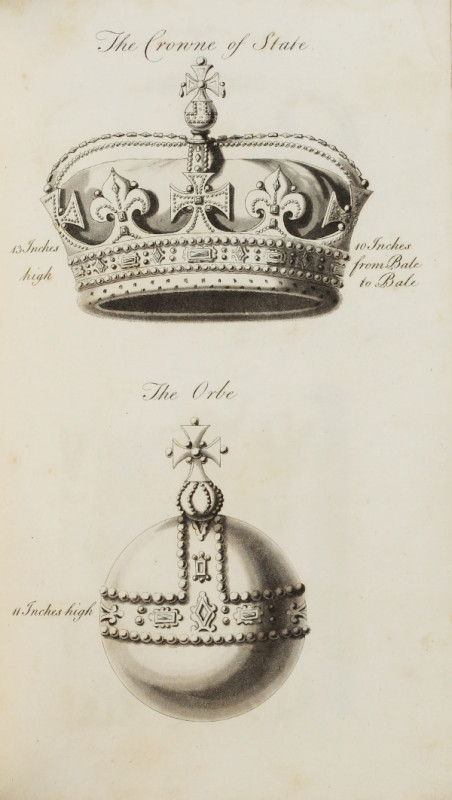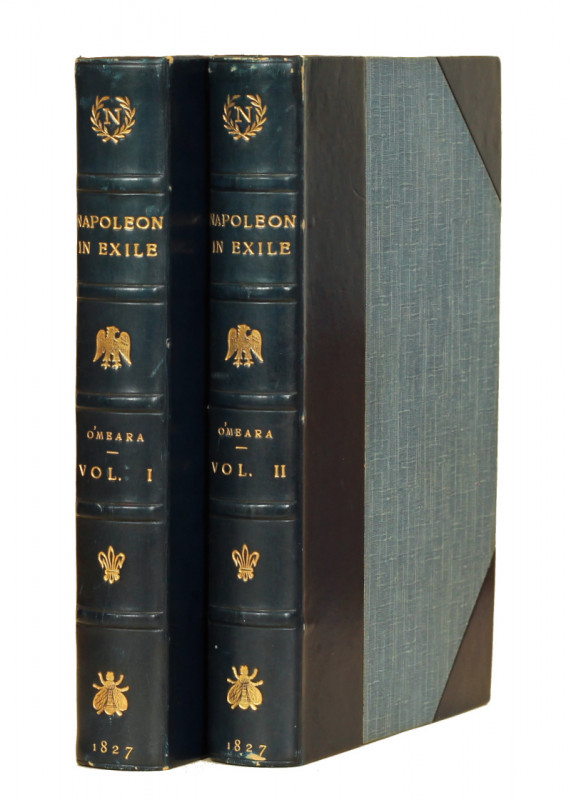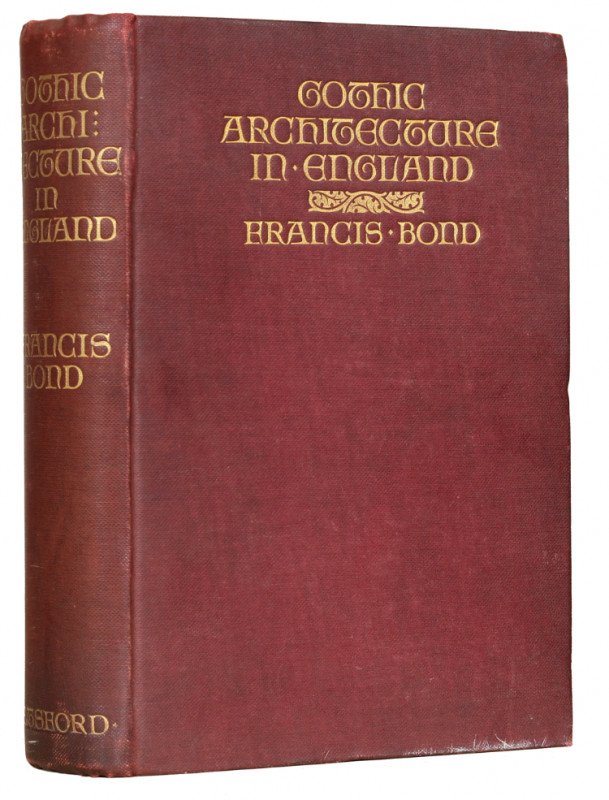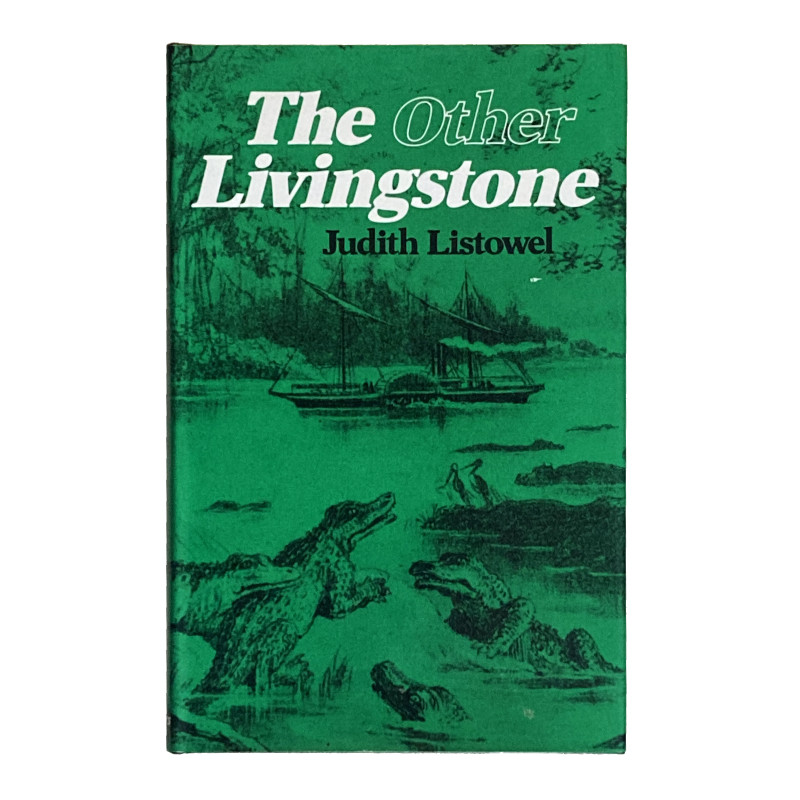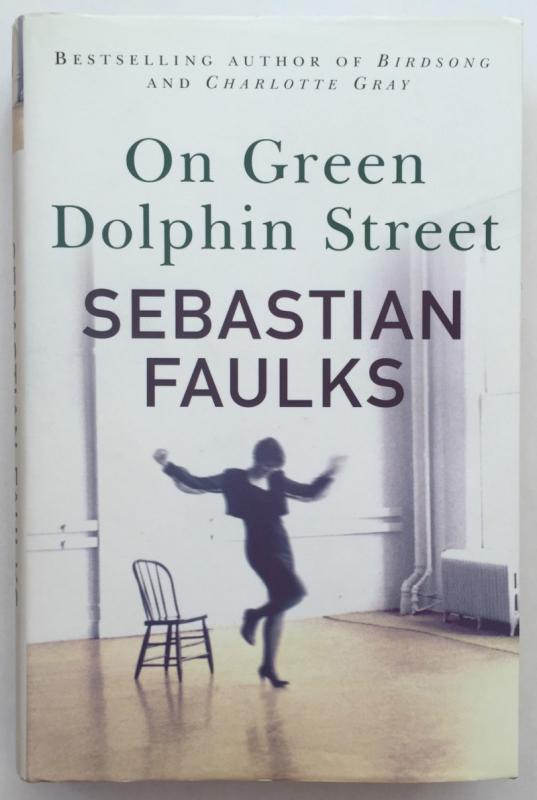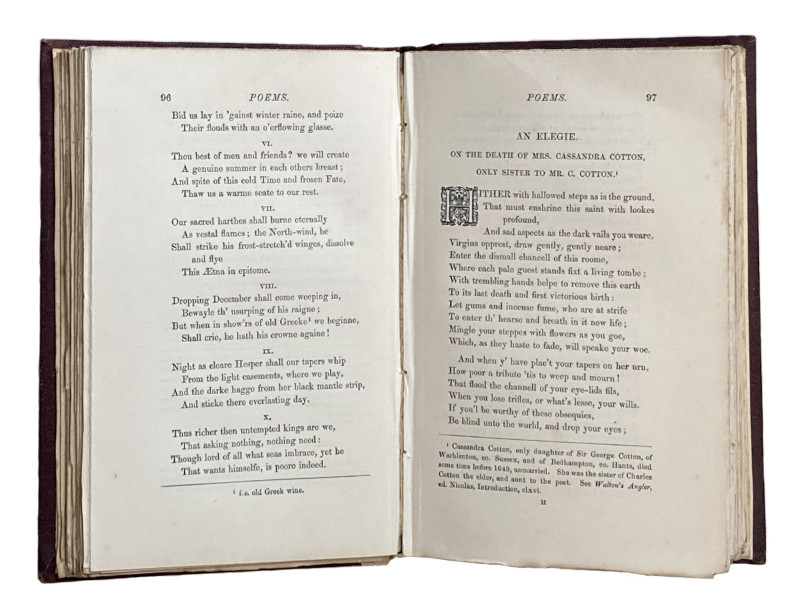An Alphabetical Dictionary of Coats of Arms Belonging to Families in Great Britain and Ireland...
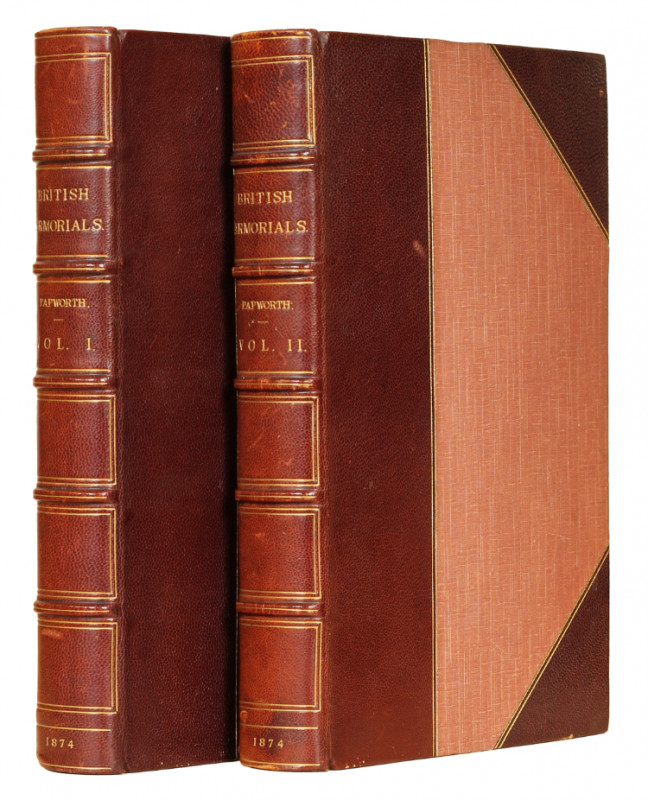
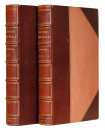


Book Description
PAPWORTH’S CELEBRATED AND PIONEERING ARMORIAL IN A WORSFOLD BINDING, FROM THE LIBRARY OF THE HISTORIAN AND COLLECTOR FREDERICK ARTHUR WADSWORTH
¶¶
Full title: An Alphabetical Dictionary of Coats of Arms Belonging to Families in Great Britain and Ireland; Forming an Extensive Ordinary of British Armorials; upon an Entirely New Plan, in which the Arms are Systematically Subdivided throughout, and so Arranged in Alphabetical Order, that the Names of Families whose Shields are Found on Buildings, Monuments, Seals, Paintings, Plate, etc., whether Mediaeval or Modern, can be Readily Ascertained. By the Late John W. Papworth ... Edited from Page 696 by Alfred W. Morant
¶¶
2 volumes, octavo in 4s (249 x 160mm), pp. I: [i]-xxii (title, verso blank, ‘List of Subscribers’, preface, introduction, ‘Table of the Alphabetical Titles’, ‘Table of Certain Charges which are to be Found under more General Titles’), [1]-560; II: [2 (title, verso blank)], 561-1125, [1 (blank)]. (Occasional light marking or spotting, a few marginal tears due to clumsy opening of quires.) Late-19th-/early-20th-century British half chestnut crushed morocco gilt over cloth by Worsfold with their pallets on the front free endpapers, spines gilt in compartments, lettered directly in two and with date at the foot, others with borders of gilt rules, top edges gilt, others trimmed, marbled endpapers. (Spines and parts of lower boards slightly faded, some light rubbing, extremities slightly bumped.) A very good set in a handsome Worsfold binding.
¶¶
Provenance: Frederic Arthur Wadsworth (1874-1943, engraved armorial bookplates on upper pastedowns) – Nottingham High School, Nottingham (sold on their behalf).
Dealer Notes
First edition. The architect and antiquary John Woody Papworth FRIBA (1820-1870) was the elder son of the noted British architect, artist, and writer John Buonarotti Papworth, who was a founder member of the Institute of British Architects and was subsequently elected its vice-president on eight occasions. John W. Papworth trained at his father’s office (where he remained until the latter’s retirement in 1846) and also enrolled at the Royal Academy Schools in 1837. His skills as an architect and draughtsman were recognised by the award of the Society of Arts’ silver Isis Medal (1838), gold Isis Medal (1840), and Stock Medallion (1845); similarly, the Institute of British Architects – which elected John W. Papworth an associate in 1841 and a fellow in 1846 – awarded him its Soane Medallion (1842), Medal of Merit (1843), and Silver Medal (1847). ¶¶
Apart from his work as an architect, artist, and designer, John W. Papworth published a number of books and articles on architecture, antiquities, and archaeology, of which the most important was An Alphabetical Dictionary of Coats of Arms Belonging to Families in Great Britain and Ireland, in which the author sought ‘to enable the generality of persons, though but slightly acquainted with heraldry, to ascertain with facility the names of the families by whom any given coats of arms are, or have been, borne. For this purpose a very large number of coats have been for the first time arranged in alphabetical order, so that any of them may be readily found; and the names of the respective families are attached’ (I, p. [ix]). An Alphabetical Dictionary of Coats of Arms Belonging to Families in Great Britain and Ireland was published by subscription, and the first parts were issued to subscribers in 1858. Some years after publication had commenced, however, ‘[o]verwork and inattention to health brought on an attack of gangrene in [Papworth’s] right foot, which after a confinement to the house for about six years, resulted at his death at his home, [...] aged fifty’ (ODNB). ¶¶
The subscription list was closed at Papworth’s death, but ‘as [...] there was a general desire among the Subscribers that the Work should be completed, the continuation of it was entrusted to Mr. Papworth’s relative and friend, Mr. Alfred W. Morant’, whose ‘taste for such subjects had led him to take a friendly interest in this Work almost from its commencement, and to watch and further its progress; and he had, in the course of his own heraldic pursuits, arranged a large collection of foreign coats of arms on a similar plan, and compiled several other manuscripts on this and kindred subjects’ (I, p. [ix]). At the time of Papworth’s death ‘at least three-fifths of the manuscript had been published in the 696 printed pages; and the remaining two-fifths of it were left by Mr. Papworth sufficiently arranged for reference’ (loc. cit.), and this unpublished part was revised and prepared for the press by Morant, who added material from sources which Papworth had identified but not incorporated into his text, and also additional coats which Morant derived from his own researches and resources. The work was completed in 1874 and, due to its comprehensive scope and ease of use, swiftly established its reputation as a standard work of reference, which appeared in further editions through the nineteenth and twentieth centuries. ¶¶
This set is in a handsome late-19th- or early-20th-century binding by the London bookbinder William Thomas Jennings Worsfold, who established his business at 12 Frith Street in about 1889, and remained at this address in Soho until his retirement in circa 1923 (cf. L. Worms ‘Bound by Worsfold’, https://ashrarebooks.com/2017/01/13/bound-by-worsfold/). This set bears the armorial bookplates of the Nottingham lawyer, historian, and book collector Frederic Arthur Wadsworth, who was probably the first owner of the set. Wadsworth was a member of the Thoroton Society (and sometime Honorary Librarian), and he contributed a number of articles on the history and antiquities of Nottinghamshire to the Transactions of the Thoroton Society. Wadsworth, who had been appointed Registrar of the Archdeaconry of Nottingham in 1918, was also the co-editor of Abstracts of Nottinghamshire Marriage Licences (London, 1930-1935) and A Calendar of Marriage Licence Bonds for the Archdeaconry of Nottingham from 1754 to 1837 (Nottingham, 1942). His antiquarian interests led Wadsworth to assemble a large library, which reflected his interests (particularly in genealogy and cartography); appropriately, the arms used on Wadsworth’s bookplate are described on p. 851 (‘Gu. three fleurs-de-lis, stalked and slipped, arg.’), where they are ascribed to ‘Wadsworth, co. York’. Wadsworth’s son, Frederic Seaton Wadsworth, was a student at Nottingham High School from 1912 to 1913, and it is possible that he or his family donated this volume to the school after his father’s death in 1943. ¶¶
A.R. Eager, A Guide to Irish Bibliographical Material (1980), 8127; G. Gatfield, Guide to Printed Books and Manuscripts Relating to British and Foreign Heraldry and Genealogy, p. 57; C. Gross, The Sources and Literature of English History from the Earliest Times to about 1485, 291; H. Hall, A Select Bibliography for the Study, Sources, and Literature of English Mediaeval Economic History, 691; M.J. Kaminkow, A New Bibliography of British Genealogy, 337 (‘The only work of its kind’). ¶¶
This set is available directly from our website (www.TypeAndForme.com). Alternatively, please contact us for any enquiries.
Apart from his work as an architect, artist, and designer, John W. Papworth published a number of books and articles on architecture, antiquities, and archaeology, of which the most important was An Alphabetical Dictionary of Coats of Arms Belonging to Families in Great Britain and Ireland, in which the author sought ‘to enable the generality of persons, though but slightly acquainted with heraldry, to ascertain with facility the names of the families by whom any given coats of arms are, or have been, borne. For this purpose a very large number of coats have been for the first time arranged in alphabetical order, so that any of them may be readily found; and the names of the respective families are attached’ (I, p. [ix]). An Alphabetical Dictionary of Coats of Arms Belonging to Families in Great Britain and Ireland was published by subscription, and the first parts were issued to subscribers in 1858. Some years after publication had commenced, however, ‘[o]verwork and inattention to health brought on an attack of gangrene in [Papworth’s] right foot, which after a confinement to the house for about six years, resulted at his death at his home, [...] aged fifty’ (ODNB). ¶¶
The subscription list was closed at Papworth’s death, but ‘as [...] there was a general desire among the Subscribers that the Work should be completed, the continuation of it was entrusted to Mr. Papworth’s relative and friend, Mr. Alfred W. Morant’, whose ‘taste for such subjects had led him to take a friendly interest in this Work almost from its commencement, and to watch and further its progress; and he had, in the course of his own heraldic pursuits, arranged a large collection of foreign coats of arms on a similar plan, and compiled several other manuscripts on this and kindred subjects’ (I, p. [ix]). At the time of Papworth’s death ‘at least three-fifths of the manuscript had been published in the 696 printed pages; and the remaining two-fifths of it were left by Mr. Papworth sufficiently arranged for reference’ (loc. cit.), and this unpublished part was revised and prepared for the press by Morant, who added material from sources which Papworth had identified but not incorporated into his text, and also additional coats which Morant derived from his own researches and resources. The work was completed in 1874 and, due to its comprehensive scope and ease of use, swiftly established its reputation as a standard work of reference, which appeared in further editions through the nineteenth and twentieth centuries. ¶¶
This set is in a handsome late-19th- or early-20th-century binding by the London bookbinder William Thomas Jennings Worsfold, who established his business at 12 Frith Street in about 1889, and remained at this address in Soho until his retirement in circa 1923 (cf. L. Worms ‘Bound by Worsfold’, https://ashrarebooks.com/2017/01/13/bound-by-worsfold/). This set bears the armorial bookplates of the Nottingham lawyer, historian, and book collector Frederic Arthur Wadsworth, who was probably the first owner of the set. Wadsworth was a member of the Thoroton Society (and sometime Honorary Librarian), and he contributed a number of articles on the history and antiquities of Nottinghamshire to the Transactions of the Thoroton Society. Wadsworth, who had been appointed Registrar of the Archdeaconry of Nottingham in 1918, was also the co-editor of Abstracts of Nottinghamshire Marriage Licences (London, 1930-1935) and A Calendar of Marriage Licence Bonds for the Archdeaconry of Nottingham from 1754 to 1837 (Nottingham, 1942). His antiquarian interests led Wadsworth to assemble a large library, which reflected his interests (particularly in genealogy and cartography); appropriately, the arms used on Wadsworth’s bookplate are described on p. 851 (‘Gu. three fleurs-de-lis, stalked and slipped, arg.’), where they are ascribed to ‘Wadsworth, co. York’. Wadsworth’s son, Frederic Seaton Wadsworth, was a student at Nottingham High School from 1912 to 1913, and it is possible that he or his family donated this volume to the school after his father’s death in 1943. ¶¶
A.R. Eager, A Guide to Irish Bibliographical Material (1980), 8127; G. Gatfield, Guide to Printed Books and Manuscripts Relating to British and Foreign Heraldry and Genealogy, p. 57; C. Gross, The Sources and Literature of English History from the Earliest Times to about 1485, 291; H. Hall, A Select Bibliography for the Study, Sources, and Literature of English Mediaeval Economic History, 691; M.J. Kaminkow, A New Bibliography of British Genealogy, 337 (‘The only work of its kind’). ¶¶
This set is available directly from our website (www.TypeAndForme.com). Alternatively, please contact us for any enquiries.
Author
PAPWORTH, John Woody and Alfred William Whitehead MORANT
Date
1874
Publisher
London: T. Richards
Friends of the PBFA
For £10 get free entry to our fairs, updates from the PBFA and more.
Please email info@pbfa.org for more information
